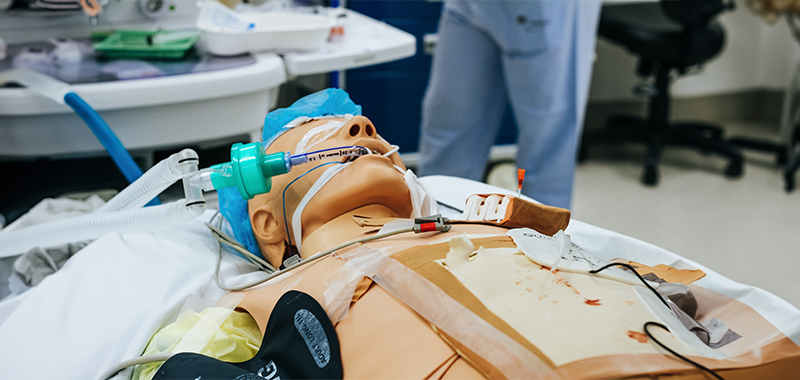
It is hosted by the University of Trieste: here’s how it works and what it can do
Hal s5301 is a humanoid robot, or more precisely, a simulator, one of its kind. Furthermore, it is the first of its kind in Europe, precisely located in Trieste, where experts from the Center for Medical Simulation and Advanced Training (Csmaa) of the Julian University are experimenting with it, within a dedicated facility at Cattinara Hospital. Hal s5301 (evidently named after the supercomputer from 2001: A Space Odyssey) is indeed an adult humanoid simulator equipped with artificial intelligence, robotic limbs, and real physiological responses, used for medical training. “We are the first in Europe to have Hal s5301,” explained Roberto Di Lenarda, Rector of the University of Trieste. “Our project is ambitious and visionary, supported by the Friuli Venezia Giulia Region, which will further establish the University of Trieste as a focal point for students from all over Italy and abroad.”
The simulator was developed by the Italian company Accurate and the US-based Gaumard Scientific and is capable of speaking, sweating, moving its eyes and arms. It is also structured to allow for the practice of major medical techniques applied in emergency rooms, intensive care, and surgery. It replicates cardiac, respiratory, vascular, and cerebrovascular physiology, which can be examined by doctors using clinical tools such as defibrillators, sensors, ventilators, and stethoscopes. Venous sampling and catheter application are also possible. Its use, in short, replicates real clinical practice entirely: teams of students simulate hospital activity upon the arrival of a patient, facing different clinical cases proposed by the instructors. Observing Hal s5301 and its symptoms, they formulate diagnoses and act based on the techniques learned during their course of study. At the end of the simulation, there is also a debriefing, guided by professors, who highlight any errors and indicate correct intervention strategies.
“Hal s5301,” emphasized Patrizia Angelotti, CEO of Accurate, a company within the Digit’Ed group, “is the most accurate patient simulator in the world. For the first time, artificial intelligence has been integrated into a humanoid device used in medicine, which represents a significant opportunity to improve the training of healthcare professionals and, consequently, the quality of care they provide to patients.” “This choice,” echoed Nicolò de Manzini, Director of the Department of Medical, Surgical, and Health Sciences at the University of Trieste, “allows medical and nursing students to acquire and enhance skills and confidence in a ‘protected’ environment to be shared within teams. It is an opportunity to experience team dynamics, manage emergencies, and refine diagnostic abilities even before encountering real patients.”
Written by Giuditta Pasta (ValueDo, Italy)



